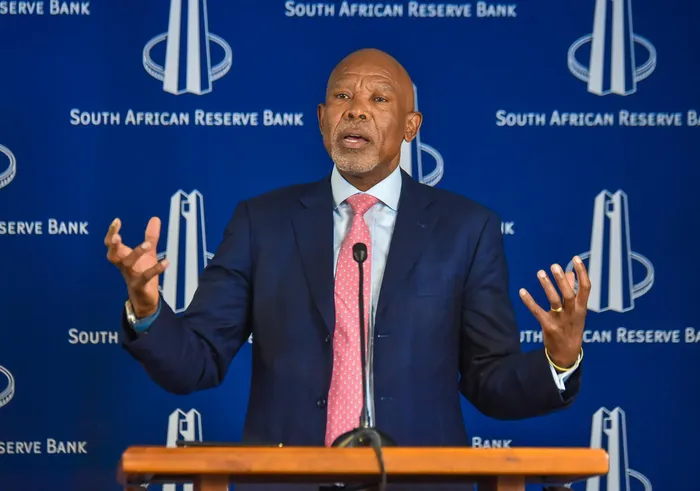Tariffs change the dynamics of international trade, posing new challenges for the South African rand
ECONOMY

Governor Kganyago explores exchange rates and tariffs at at at the Kgalema Motlanthe Foundation's Drakensberg Inclusive Growth Forum
Image: SARB | Facebook
Lesetja Kganyago, the Governor of the South African Reserve Bank, gave a powerful speech at the Drakensberg Inclusive Growth Forum hosted by the Kgalema Motlanthe Foundation. He covered the changing relationship between exchange rates and tariffs, emphasizing both the historical background and the current implications for the South African economy.
Kganyago's speech focused on the dual nature of exchange rates, a long-standing issue made worse by the current tariff dilemma.
"We no longer live in a world where leading countries favour openness to trade," he said, addressing a significant shift in dynamics that has unfolded in recent years. With tariffs making a comeback in global trade, countries are recalibrating their economic strategies, needing to grapple with new realities that could potentially shift exchange rate valuations.
Kganyago dissected the conventional wisdom that tariffs usually cause local currencies to appreciate by raising the cost of imports and enabling domestic producers to charge higher prices.
However, he noted that the unexpected depreciation of the US dollar this year has complicated these narratives. After beginning 2025 at a multi-decade high, the dollar shifted downwards, leaving South Africa in a surprisingly advantageous position against the backdrop of broader macroeconomic trends.
For South Africa, Kganyago indicated that recent economic conditions have produced a silver lining: a stronger rand, lower domestic interest rates, and rising terms of trade. "2025 has been a better year for emerging markets than many had feared," he stated, suggesting that the combination of a weaker dollar and a strong rand could bolster South Africa's resilience amid global pressures.
Delving deeper into the relationship between exchange rates and economic growth, Kganyago referred to the Mundell-Fleming framework that typically predicts decreased growth with a stronger currency. However, he challenged this conventional wisdom by pointing out that South Africa's weaker currency over the past decade has coincided with stagnation, a clear indicator that other factors are at play.
Amidst this economic landscape, Kganyago stressed the importance of understanding the broader picture. He cautioned that currency values could reflect deeper national issues. "A country that looks good will attract investment and appreciate in value," he explained, drawing attention to how perceptions of governance, structural reforms, and economic health directly influence currency strength.
In reflecting on South Africa’s exchange rate policy, Kganyago pointed to the nation’s commitment to exchange rate flexibility, established after a tumultuous history of monetary interventions. He emphasised that this approach has allowed the rand to act as a buffer in times of international economic stress while preventing greater financial instability.
Kganyago's remarks also touched on inflation perceptions, noting that South Africa has long been an outlier in terms of inflation targets compared to its peers. He asserted that as the country moves towards a more aligned inflation rate, the rand could behave differently, promising potentially healthier economic dynamics.
He concluded with an optimistic outlook for South Africa, reinforcing that despite global challenges, the nation’s external position has markedly improved. "When people tell you the rand is a weak and volatile currency, encourage them to think again," he urged, signalling a confident push towards a more resilient economic future.
IOL